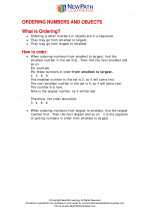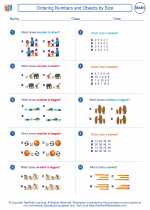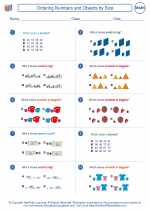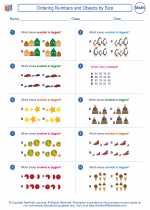Ordering Numbers and Objects by Size
In mathematics, ordering numbers and objects by size is an important skill for young learners to develop. It helps them understand the concept of relative magnitude and lays the foundation for more advanced mathematical concepts.
Ordering Numbers
When ordering numbers, children learn to compare numbers and determine which is greater than, less than, or equal to another. They use the symbols > (greater than), < (less than), and = (equal to) to compare numbers. For example, in the set of numbers {3, 7, 5, 10, 4}, the numbers can be ordered from least to greatest as 3 < 4 < 5 < 7 < 10.
Ordering Objects by Size
Ordering objects by size involves arranging objects based on their physical dimensions, such as length, height, weight, or volume. Children learn to compare the size of objects and determine which is the smallest, largest, or in between. For example, a set of objects {apple, banana, orange, pear, grape} can be ordered by size as grape < apple < pear < orange < banana.
Practicing Ordering
To help children master the skill of ordering numbers and objects by size, activities such as sorting, comparing, and arranging items can be used. These activities can be hands-on, using tangible objects, or done through visual representations and interactive games.
By practicing ordering numbers and objects by size, children develop a foundational understanding of mathematical relationships and gain the ability to make comparisons in various contexts.
Overall, ordering numbers and objects by size is an essential skill that sets the stage for more complex mathematical concepts and lays the groundwork for logical thinking and problem-solving.
.◂Math Worksheets and Study Guides First Grade. Ordering Numbers and Objects by Size

 Worksheet/Answer key
Worksheet/Answer key
 Worksheet/Answer key
Worksheet/Answer key
 Worksheet/Answer key
Worksheet/Answer key
 Worksheet/Answer key
Worksheet/Answer key
 Worksheet/Answer key
Worksheet/Answer key
